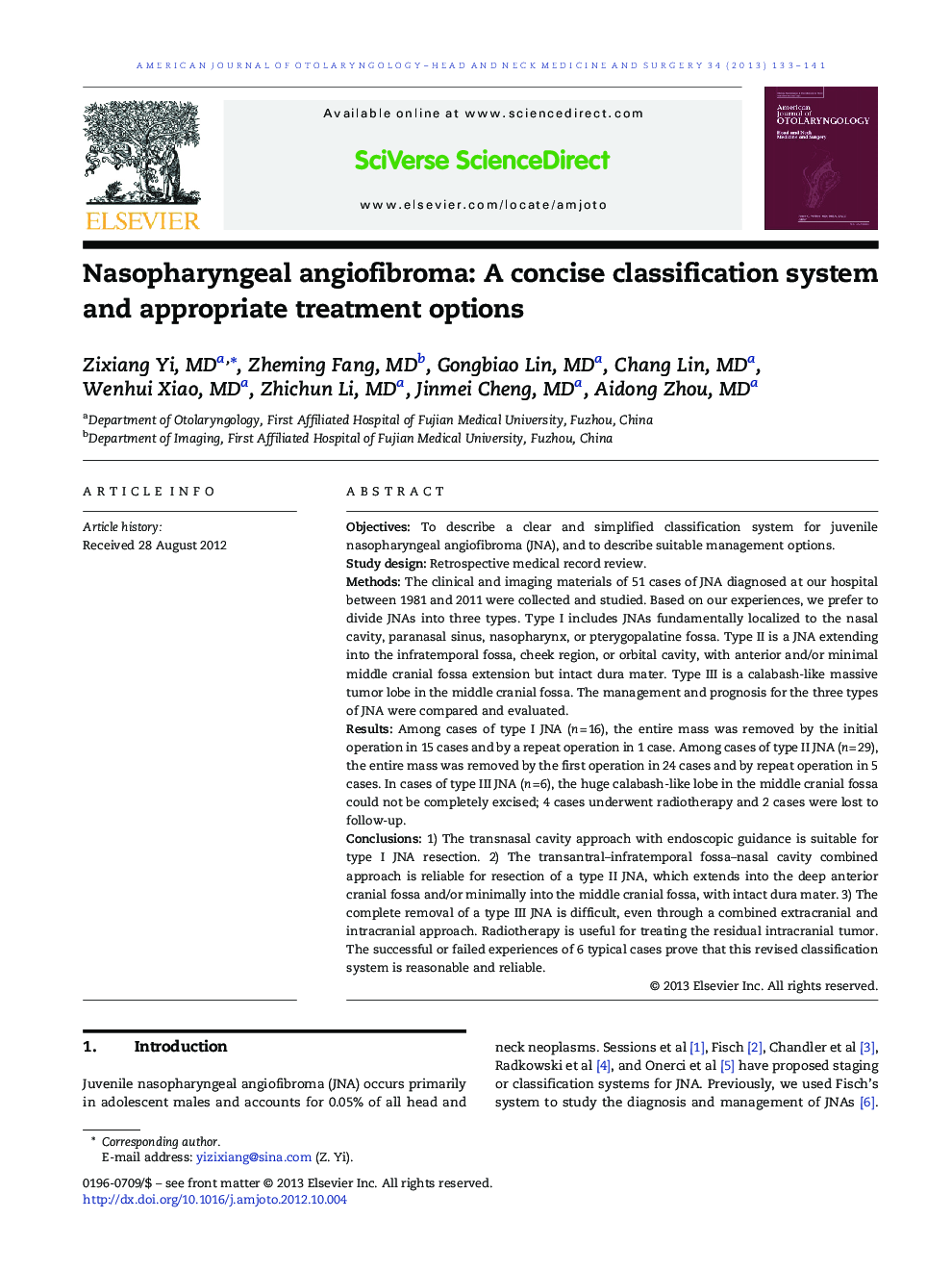| کد مقاله | کد نشریه | سال انتشار | مقاله انگلیسی | نسخه تمام متن |
|---|---|---|---|---|
| 4103437 | 1605250 | 2013 | 9 صفحه PDF | دانلود رایگان |

ObjectivesTo describe a clear and simplified classification system for juvenile nasopharyngeal angiofibroma (JNA), and to describe suitable management options.Study designRetrospective medical record review.MethodsThe clinical and imaging materials of 51 cases of JNA diagnosed at our hospital between 1981 and 2011 were collected and studied. Based on our experiences, we prefer to divide JNAs into three types. Type I includes JNAs fundamentally localized to the nasal cavity, paranasal sinus, nasopharynx, or pterygopalatine fossa. Type II is a JNA extending into the infratemporal fossa, cheek region, or orbital cavity, with anterior and/or minimal middle cranial fossa extension but intact dura mater. Type III is a calabash-like massive tumor lobe in the middle cranial fossa. The management and prognosis for the three types of JNA were compared and evaluated.ResultsAmong cases of type I JNA (n = 16), the entire mass was removed by the initial operation in 15 cases and by a repeat operation in 1 case. Among cases of type II JNA (n = 29), the entire mass was removed by the first operation in 24 cases and by repeat operation in 5 cases. In cases of type III JNA (n = 6), the huge calabash-like lobe in the middle cranial fossa could not be completely excised; 4 cases underwent radiotherapy and 2 cases were lost to follow-up.Conclusions1) The transnasal cavity approach with endoscopic guidance is suitable for type I JNA resection. 2) The transantral–infratemporal fossa–nasal cavity combined approach is reliable for resection of a type II JNA, which extends into the deep anterior cranial fossa and/or minimally into the middle cranial fossa, with intact dura mater. 3) The complete removal of a type III JNA is difficult, even through a combined extracranial and intracranial approach. Radiotherapy is useful for treating the residual intracranial tumor. The successful or failed experiences of 6 typical cases prove that this revised classification system is reasonable and reliable.
Journal: American Journal of Otolaryngology - Volume 34, Issue 2, March–April 2013, Pages 133–141